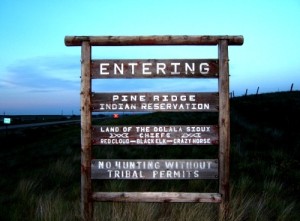 Image from collegemagazine.com courtesy of nativeamericanministry.comHere's a piece by Kristi Eaton of the Associated Press from Pine Ridge, South Dakota. According to the story, the first circle has been convened for a youth case with hopes to continue and broaden the program. Note in the second paragraph that victims and relatives of victims and the offender are included in the process:
Image from collegemagazine.com courtesy of nativeamericanministry.comHere's a piece by Kristi Eaton of the Associated Press from Pine Ridge, South Dakota. According to the story, the first circle has been convened for a youth case with hopes to continue and broaden the program. Note in the second paragraph that victims and relatives of victims and the offender are included in the process:
A South Dakota tribe has been testing a form of restorative justice called sentencing circles in hopes it will make community members more accountable to each other and reduce the number of people who commit more crimes.
Sentencing circles provide an alternative to prison, with a group discussing the case and recommending a punishment that tailored to the offender. The circle can include prosecutors, police, the offender, victims, relatives of the offender and victims and anyone else in the community who has a stake in the situation.
The Oglala Sioux tribe currently has one sentencing circle in operation, and the tribe's attorney general said she hopes the method could be extended to all cases.
"It has a more healing affect because you're mending broken relationships and broken people," Attorney General Rae Ann Red Owl told The Associated Press. "I think if you compare that with a penal system, you're locking them up, you may or may not see the light from the incarceration. A lot of times, those in the penal system, it's such a different culture of its own, and it's based on a kind of survival mentality so you don't really know what you're going to get when you're done."
Red Owl declined to provide details on the case being handled by the sentencing circle but said it originated in Family and Child Court, which handles custody issues, juvenile crimes and child abuse cases. The tribe has been working with the Rapid City-based Center for Restorative Justice to develop the sentencing circle. A new one would be formed for each case.
"It's a lot like a talking circle," Red Owl said, referring to a traditional Native American process in which each member of the circle is allowed time to speak without interruption. "Everybody gets a chance to talk without interruption. It's done in a respectful way. It's confidential."
By including so many stakeholders and leaving room for everyone to speak, this truly sounds like a process that not only helps decide the outcome of a case but also allows for people to process their feeling and get their questions answered. We'll be keeping a lookout to see how this progresses.
Read the full article here.

